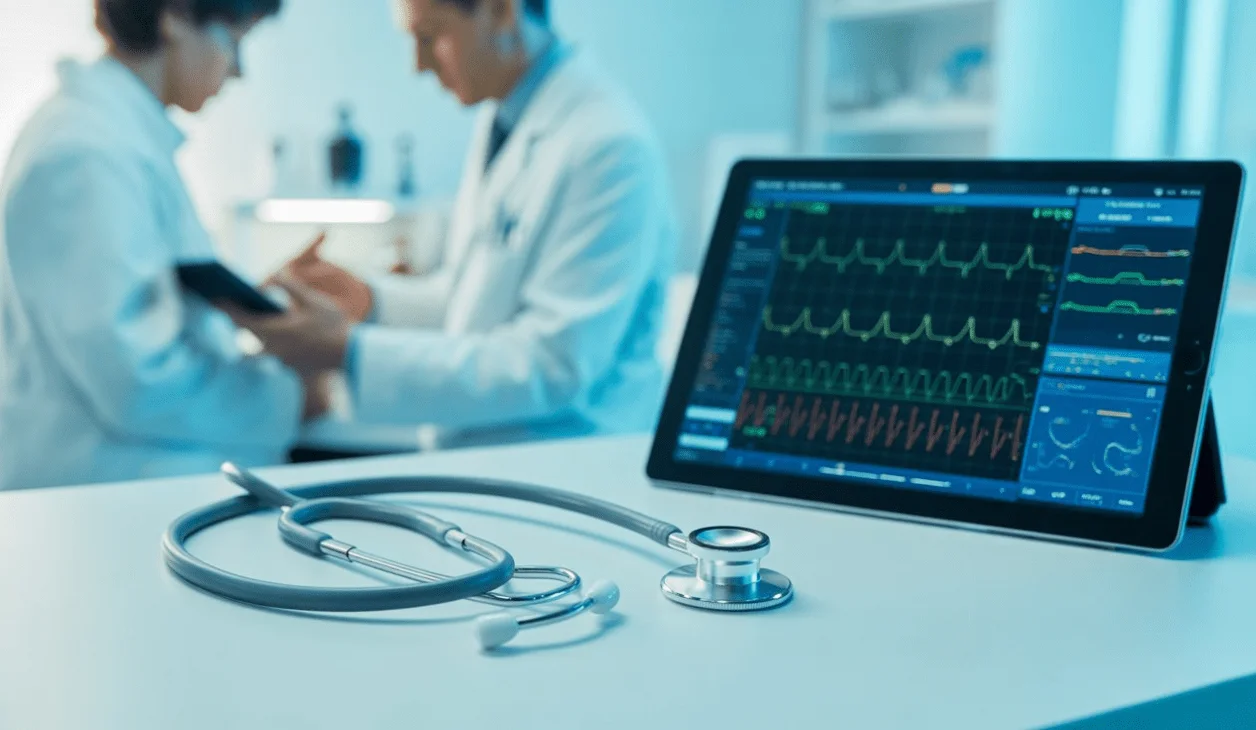Fonendi: The New Era of Digital Stethoscopes and Medical Diagnostics
The world of medicine has always been in constant evolution. From the days when physicians relied solely on the patient’s pulse to diagnose illnesses, to today’s era of advanced diagnostic tools, the journey has been remarkable. Among these innovations, the stethoscope holds a special place. Its invention transformed clinical practice by allowing doctors to listen directly to the internal sounds of the human body. Over time, this device has undergone countless improvements. Now, in the age of digital transformation, a modern version known in some contexts as fonendi is emerging not just as a stethoscope, but as a complete diagnostic solution.
From Classic Stethoscopes to Digital Devices
The traditional stethoscope revolutionized medicine, but it was not without limitations. Sounds could often be faint, background noise interfered, and there was no way to record or share what was heard. This meant only the attending physician could interpret the sounds in real time, and no evidence was left behind.
Digital technology has changed all of this. Modern devices not only amplify internal sounds but also filter out background noise. Subtle differences that were once difficult to detect now become clear. In addition, these instruments can record audio for future playback and analysis. This functionality makes devices like fonendi indispensable in contemporary healthcare.
Key Features of Fonendi
What sets this device apart are the capabilities that go beyond a traditional stethoscope:
- Sound amplification: Heartbeats and lung sounds are magnified for better clarity.
- Noise reduction: Environmental noise is filtered out so only the patient’s sounds remain.
- Digital recording: Doctors can save audio files for later review or share them with colleagues.
- Software integration: Many models can connect with computers or mobile apps to provide graphical analysis of sound patterns.
These features make diagnostics more reliable, efficient, and accessible for both healthcare providers and patients.
Importance in Modern Healthcare
In today’s fast-paced world, accurate and timely diagnosis is critical. Even the slightest wheeze in the lungs or irregularity in the heartbeat could go unnoticed with a traditional stethoscope. With digital technology, these subtle variations can be highlighted, allowing treatment to begin at earlier stages.
In emergency departments, where noise levels are high, this technology ensures doctors can still hear clearly. In intensive care units, it enables continuous monitoring of patients with a high degree of precision. These advantages make such devices an essential part of modern clinical practice.
Role in Telemedicine
The COVID-19 pandemic accelerated the adoption of telemedicine. Patients and doctors increasingly rely on digital communication for consultations. But remote care requires tools that can bridge the physical gap.
Here, fonendi proves particularly valuable. The ability to record and transmit heart or lung sounds in real time allows patients in rural or underserved areas to access expert opinions without traveling long distances. Specialists can analyze the recordings instantly, improving healthcare access worldwide.
A Tool for Medical Education
Medical students often face challenges in learning to interpret subtle internal sounds. Each patient is different, and every condition produces unique acoustic patterns. A digital device solves this challenge by enabling students to replay recordings multiple times for practice.
Teachers can also use the recordings in group lessons, ensuring that every student hears the same example. This shared learning environment helps build confidence and sharpens diagnostic skills more effectively than traditional methods.
Potential Challenges
While the benefits are undeniable, some challenges must be addressed before digital stethoscopes become universally adopted:
- Quality differences: Not all manufacturers produce devices of the same standard. Low-cost models may generate poor-quality recordings.
- Data security: Because these devices store and transmit patient data, safeguarding sensitive information is essential.
- Cost factor: Advanced models with premium features can be expensive, making them less accessible for smaller clinics or individual practitioners.
These hurdles must be overcome to ensure widespread adoption and equitable use.
The Future of Diagnostic Technology
Artificial intelligence is expected to push these devices even further. Machine learning algorithms are already being developed to analyze audio signals and detect diseases automatically. For instance, AI can study heartbeat patterns and flag early signs of arrhythmia.
Similarly, respiratory sound analysis could lead to early detection of conditions like asthma or pneumonia. By combining human expertise with AI, diagnostics will become faster and more precise, ultimately improving patient outcomes.
Conclusion
In essence, fonendi represents much more than a tool—it symbolizes the future of medical diagnostics. By blending the reliability of the traditional stethoscope with the innovations of digital technology, it delivers clarity, precision, and accessibility like never before.
Doctors gain deeper insights, students learn more effectively, and patients benefit from higher-quality care. While cost and data security remain concerns, the ongoing development of such devices is paving the way for a healthcare system that is smarter, more connected, and more patient-centered.
The journey of the stethoscope has come a long way, and with digital transformation, its future looks even brighter. In this evolving landscape, fonendi stands as a testament to how innovation can redefine medicine for the better.


